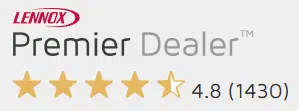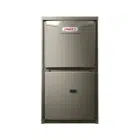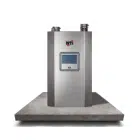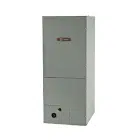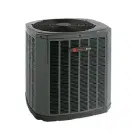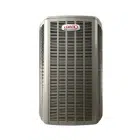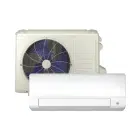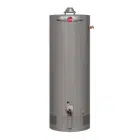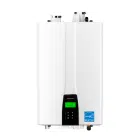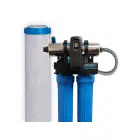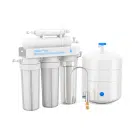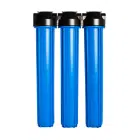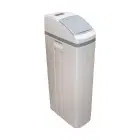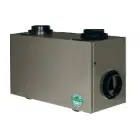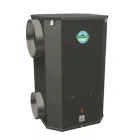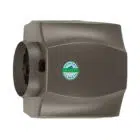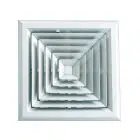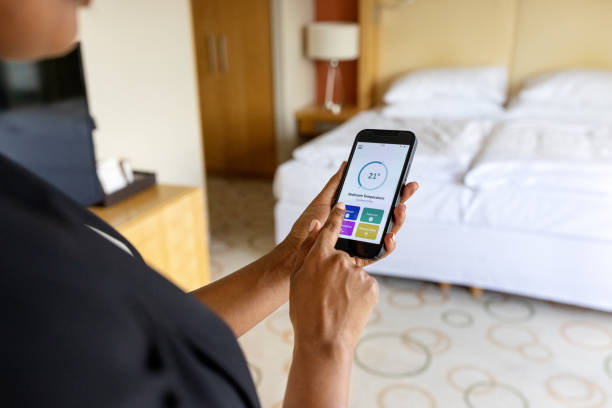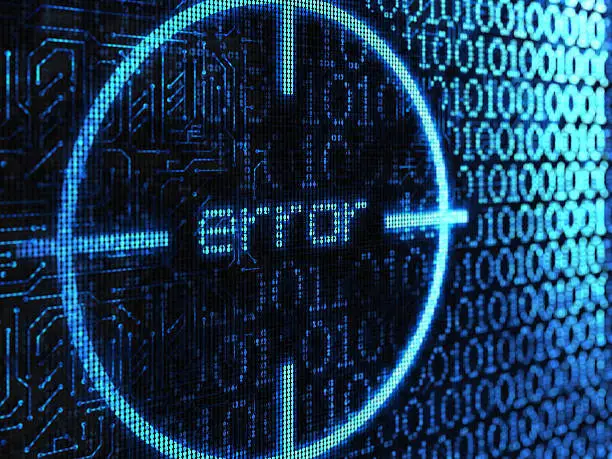
Table of Contents
Your furnace is one of the most critical components in keeping your home warm and comfortable during those long Canadian winters. But when it stops working as it should, those little blinking lights or furnace error codes can leave you scratching your head. What do they mean? Is it a quick fix or something that requires a professional?
Understanding furnace error codes can help you make informed decisions about your HVAC system. This guide is here to walk you through the most common furnace error codes, what they mean, and what steps you should take next. So, whether you’re dealing with an ignition issue or a blower motor error, you’ll know exactly what to do. And remember, if the problem seems beyond your scope, our team at HVAC Service Solutions is just a call away.
What Are Furnace Error Codes?
First things first: what exactly are furnace error codes? Simply put, they’re your furnace’s way of telling you something’s wrong. Modern furnaces, including popular brands like Trane and Lennox, come equipped with diagnostic systems that detect malfunctions and translate them into a series of blinks or digital codes. These codes are invaluable in diagnosing the problem quickly.
Different furnaces have different codes depending on the brand and type, whether it’s gas, electric, or oil. Typically, you’ll find these codes displayed on the control board or thermostat, depending on your system. Understanding these codes isn’t just about knowing what’s wrong—it’s about knowing what to do next.
Common Furnace Error Codes and Their Meanings
Let’s dive into the nitty-gritty. Below are some of the most common furnace error codes you’re likely to encounter, along with a straightforward explanation of what they mean and what could be causing them.
Ignition Failure Codes
Ignition issues are among the most common problems homeowners face with their furnaces. These codes often signal problems in getting the furnace to light properly.
- Code 10: Ignition Lockout
When you see this code, it typically means your furnace tried to ignite several times and failed, triggering a lockout for safety. Causes could range from a dirty flame sensor to a malfunctioning igniter. In some cases, simply resetting the furnace might help, but persistent issues mean it’s time to call in a professional from HVAC Service Solutions.
Pressure Switch Codes
Your furnace’s pressure switch is a safety device that checks if the venting system is working properly before the furnace starts up. Problems here can lead to some specific codes.
- Code 31: Pressure Switch Failed to Close
This code indicates that the pressure switch didn’t close as it should, possibly because of a blocked vent or a faulty switch. It’s essential to address this issue quickly since it can prevent your furnace from starting altogether.
Flame Sensor Issues
The flame sensor is a small rod that detects whether the furnace’s burners are lit. If it doesn’t sense a flame, it shuts off the gas to prevent a dangerous situation.
- Code 24: Flame Sensor Failure
This error often occurs when the flame sensor gets dirty or misaligned. Cleaning the sensor with a gentle cloth or fine sandpaper might solve the problem. However, if this doesn’t work, the sensor might need replacing, which is a job best left to professionals.
Limit Switch and Thermostat Issues
The limit switch monitors the furnace’s temperature, ensuring it doesn’t overheat. Problems with this switch or your thermostat can trigger error codes that often point to airflow issues.
- Code 33: Limit Circuit Fault
If your furnace shows this code, it’s likely overheating, which could be due to blocked airflow or a malfunctioning blower. Overheating is a serious issue that not only affects performance but could also be dangerous. In most cases, this code requires professional diagnosis and repair.
Blower Motor Errors
The blower motor is responsible for circulating air throughout your home. When something goes wrong here, you’ll know it pretty quickly—often through error codes that specifically reference the motor.
- Code 44: Blower Motor Failure
A Code 44 usually means your blower motor isn’t working properly, whether it’s due to a motor that’s burned out or wiring issues. Given the complexity of this component, it’s best to have a technician from HVAC Service Solutions take a look.
General Electrical Issues
Sometimes, your furnace might encounter electrical problems that aren’t tied to a specific component like the blower or pressure switch. These issues can also manifest in error codes.
- Code 12: Low Voltage
Seeing this code? It’s a sign that your furnace isn’t receiving enough power. This could be due to a problem with your home’s electrical system or an issue within the furnace itself, like a faulty control board. Either way, this isn’t something to ignore, as it can lead to more severe issues down the line.
Trane Furnace Error Codes
If you have a Trane furnace, you might encounter specific error codes unique to this brand. Understanding these Trane furnace error codes can save you from unnecessary stress and help you pinpoint the issue more accurately.
- Trane Furnace Error Code 2: System Lockout
This Trane furnace error code indicates that the furnace has shut down due to multiple failed ignition attempts. Similar to a general ignition lockout, it’s a sign that the system needs a thorough check, possibly due to a faulty igniter or dirty flame sensor. - Trane Furnace Error Code 4: Open Temperature Switch
This code usually means that a temperature limit switch is open, often due to overheating. It’s crucial to check for airflow issues like a dirty filter or blocked vents, and if the problem persists, contact HVAC Service Solutions for a professional inspection. - Trane Furnace Error Code 7: Blower Motor Malfunction
When you see this Trane furnace error code, it indicates a problem with the blower motor, such as a failure to start or run properly. Given the vital role the blower motor plays, it’s best to have a technician handle this issue.
Lennox Furnace Error Codes
Lennox furnaces also have their own set of diagnostic codes. Knowing these Lennox furnace error codes can help you quickly identify and address issues specific to this brand.
- Lennox Furnace Error Code A125: Ignition Lockout
This is a common error code across many brands, but in Lennox furnaces, it indicates that the furnace failed to ignite after multiple attempts. It could be due to a dirty flame sensor or a problem with the gas supply. - Lennox Error Code E201: Pressure Switch Open
When this Lennox furnace error code appears, it means the pressure switch didn’t close as expected, possibly due to a venting issue or a malfunction in the switch itself. Immediate attention is needed to resolve this issue and ensure safe operation. - Lennox Error Code A144: Blower Motor Failure
This code signals a problem with the blower motor, much like in Trane furnaces. It might be a wiring issue, or the motor itself could be failing.
In either case, contacting a professional from HVAC Service Solutions is the safest course of action.
What to Do When You See an Error Code
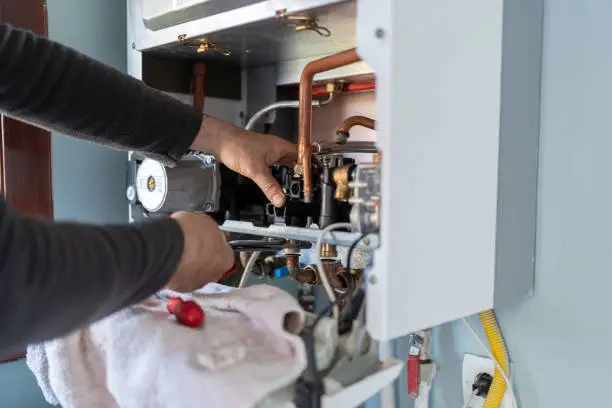
Now that you’ve got an idea of what these furnace error codes mean, the big question is: what do you do next? Here’s a straightforward approach to handling furnace error codes.
- Check the Manual: Your furnace’s user manual is your first line of defense. Most will have a list of error codes specific to your model and what they mean.
- Reset the Furnace: Sometimes, all your furnace needs is a reset to get things back on track. Turn it off, wait a few minutes, and then turn it back on.
- Inspect the Furnace: Safely check the areas mentioned by the error code. For instance, if you’re dealing with an ignition failure, inspect the flame sensor or igniter. However, avoid opening any components that could be dangerous or void your warranty.
- When to Call a Professional: If the problem persists or if the furnace error code indicates a more complex issue (like electrical problems or motor failures), it’s time to call in the pros.
HVAC systems are complicated, and attempting to fix something you’re not familiar with can lead to further damage — or worse, a safety hazard. Our team at HVAC Service Solutions is always ready to assist with professional repairs.
Preventing Furnace Error Codes
While understanding and addressing furnace error codes is important, preventing them in the first place is even better. Regular maintenance is key to keeping your furnace running smoothly and avoiding those pesky error codes.
- Regular Maintenance: Scheduling regular check-ups with an HVAC professional can help catch small issues before they turn into big problems. Professionals will clean components, check for wear and tear, and ensure everything is running as it should.
- DIY Maintenance Tips: There are also a few things you can do yourself. Changing the air filter every 1-3 months can prevent airflow issues that often lead to overheating. Additionally, make sure your vents aren’t blocked by furniture or debris, which can restrict airflow and cause the furnace to overheat.
- Watch for Warning Signs: Be mindful of unusual sounds, smells, or any changes in your furnace’s performance. These could be early signs of trouble, even before a furnace error code pops up.
By choosing a reputable provider like HVAC Service Solutions, you ensure that your furnace replacement is handled with the care and expertise it deserves. Not only will you enjoy a warmer home, but you’ll also benefit from lower energy bills and the peace of mind that comes from knowing your investment is protected.
If you’re considering furnace replacement, don’t hesitate to contact us for a free consultation. Let us help you find the perfect solution for your home and budget, so you can enjoy a cozy, comfortable winter in Ontario.
Conclusion
Understanding furnace error codes can save you time, money, and a lot of headaches, especially during the cold Canadian winters. While some issues can be resolved with a simple reset or minor fix, others require professional intervention. Knowing when to call for help is crucial.
At HVAC Service Solutions, we’re here to assist with any furnace issues you might encounter. Whether it’s deciphering an error code or providing routine maintenance to keep your system in top shape, our team of professionals is ready to help. Don’t hesitate to reach out if you need assistance — keeping your home warm and comfortable is our top priority.
Frequent Asked Questions
What should I do if my furnace displays an error code?
When your furnace displays an error code, the first step is to consult the furnace’s user manual. The manual usually includes a list of furnace error codes specific to your model, along with troubleshooting tips. If the manual doesn’t help, try resetting the furnace by turning it off, waiting a few minutes, and then turning it back on. If the error code persists, it’s best to call a professional HVAC technician to diagnose and fix the issue. Attempting to fix complex problems on your own can be risky and may lead to further damage.
Can I reset my furnace to clear an error code?
Yes, resetting your furnace can often clear an error code, especially if the issue is minor or was caused by a temporary glitch. To reset the furnace, turn off the power to the unit, wait about 5 minutes, and then turn it back on. Some furnaces also have a reset button that you can press. However, if the error code reappears after resetting, it indicates a persistent problem that requires professional attention.
What are the most common furnace error codes for Trane furnaces?
Trane furnaces are equipped with diagnostic systems that can display various error codes. Some common Trane furnace error codes include:
- Trane Error Code 2: System Lockout – Indicates multiple failed ignition attempts.
- Trane Error Code 4: Open Temperature Switch – Suggests a temperature limit switch is open, often due to overheating.
- Trane Error Code 7: Blower Motor Malfunction – Points to a problem with the blower motor.
These codes usually require a professional HVAC technician to accurately diagnose and resolve the issue.
What do Lennox furnace error codes typically indicate?
Lennox furnaces have their own set of error codes that can indicate various issues. Common Lennox furnace error codes include:
- Lennox Error Code A125: Ignition Lockout – This code appears when the furnace fails to ignite after multiple attempts.
- Lennox Error Code E201: Pressure Switch Open – Indicates that the pressure switch didn’t close properly, possibly due to a venting issue.
- Lennox Error Code A144: Blower Motor Failure – Suggests a problem with the blower motor, which could be due to wiring issues or motor failure.
These codes help in pinpointing specific issues but often require expert intervention to resolve.
How can I prevent furnace error codes from occurring?
Preventing furnace error codes primarily involves regular maintenance. Here are a few tips:
- Annual Professional Maintenance: Schedule an annual HVAC check-up with a professional to inspect and clean the furnace, ensuring all components are in good working condition.
- Regular Filter Changes: Change the air filter every 1-3 months to ensure proper airflow and prevent overheating, which can trigger error codes.
- Inspect Vents and Ducts: Ensure that vents and ducts are not blocked by furniture or debris, as restricted airflow can cause the furnace to overheat and generate error codes.
Monitor Performance: Pay attention to any unusual sounds, smells, or drops in performance. Early detection of issues can prevent more serious problems.
Are furnace error codes the same across all brands?
No, furnace error codes are not the same across all brands. Each furnace manufacturer, such as Trane, Lennox, Carrier, or Goodman, has its own set of error codes, and the meaning of these codes can vary significantly between brands. It’s important to refer to the specific user manual for your furnace model to understand what each code means. Some codes might be similar across brands, such as codes for ignition failures or blower motor issues, but the exact interpretation and solution can differ.
What does it mean if my furnace shows a low voltage error code?
A low voltage error code, often seen as Code 12 or similar, indicates that your furnace isn’t receiving the required amount of electrical power to operate correctly. This can be due to several factors, such as:
- Issues with the Electrical Supply: Problems with your home’s electrical system, such as a tripped breaker or a faulty circuit, could be the cause.
- Faulty Wiring: Loose or damaged wires within the furnace can lead to insufficient voltage.
- Control Board Problems: If the furnace’s control board is malfunctioning, it may not regulate power correctly.
Low voltage issues should be addressed promptly, as they can lead to more serious problems or even damage the furnace. It’s advisable to contact an HVAC technician to diagnose and fix the issue safely.
Is it safe to ignore a furnace error code if my furnace is still working?
No, it’s not safe to ignore a furnace error code, even if your furnace is still running. Error codes are your furnace’s way of alerting you to potential problems that could worsen over time. Ignoring these warnings can lead to decreased efficiency, higher energy bills, or even complete system failure. In some cases, continued operation with certain error codes can pose safety risks, such as overheating or carbon monoxide leaks. Always address furnace error codes promptly to avoid more significant issues down the road.
Why does my furnace keep showing the same error code after resetting?
If your furnace keeps displaying the same error code after resetting, it indicates that the underlying problem hasn’t been resolved. A reset can clear temporary glitches, but persistent error codes often point to a more serious issue that requires professional repair. For example, if an ignition lockout code reappears, the problem could be with the flame sensor, igniter, or gas supply, all of which need expert attention. Repeated error codes should not be ignored, as they can lead to further damage or safety concerns.
How do I know when to call a professional for furnace error codes?
You should call a professional HVAC technician when:
- The error code persists after resetting the furnace.
- The error code relates to complex issues like blower motor failure, pressure switch problems, or electrical faults.
- You are unfamiliar with furnace components or uncomfortable performing troubleshooting steps.
- There are safety concerns, such as overheating or gas leaks.
Attempting to fix complicated furnace issues without proper knowledge can result in further damage or safety hazards. If in doubt, it’s always better to rely on professional expertise to ensure the problem is correctly diagnosed and repaired.
Share
